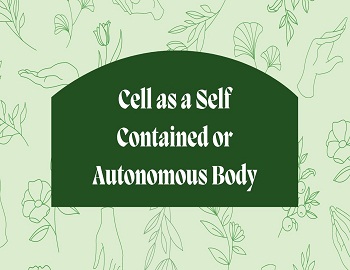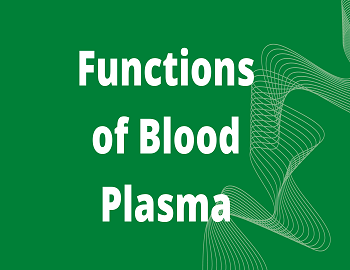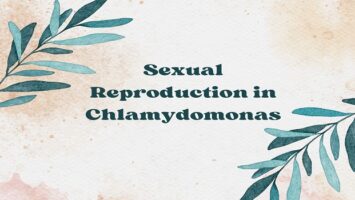Pandorina and Eudorina:
Pandorina- The colony consists of sixteen cells, each like a single Chlamydomonas cell. The cells are rather pyramidal in shape and are arranged in an oval group with their pointed ends inwards as shown below. They are closely packed together, and the whole coenobium is surrounded by a mucous investment. Each individual cell has two widely divergent flagella, by means of which the whole colony is propelled along, generally with a definite anterior end, in the cells of which the eye spots are larger and better developed.

Reproduction is both sexual and asexual. Asexual reproduction consists of the formation of daughter colonies within the cells of the parent. Each cell divides into sixteen cells, which at first form a curved plate. This later becomes flat and then curves in the reverse direction, the corners meeting to form a hollow coenobium. This is liberated as a new colony after the breakdown of the parent cell. This inversion of the daughter colonies during development should be compared with that described in Eudorina and Volvox. This liberation of independent zoospores rarely occurs.
Sexual reproduction consists of the liberation of the named protoplasts of the cells, which escape from the membranes and become the gametes. Conjugation is usually isogamous, but there is a tendency towards a preferential fusion of gametes of unequal size, thus showing an advance towards anisogamy, which becomes much more pronounced in Eudorina and Volvox.
The zygote germinates to liberate a single zoospore, which divides to form a new colony. Four cells are actually formed by the germinating zygote, but only one of these survives to form a zoospore, while the other three abort. This suggests that meiosis probably occurs at this stage, as in Gonium.
Eudorina- In Eudorina the colony is larger than in Pandorina. It is oval and consists generally of thirty-two globose cells loosely arranged on the periphery of a hollow mucilaginous matrix as shown below. The biflagellate cells are of the typical Chlamydomonad type, but the chloroplast often has several pyrenoids, and the cells show a progressive reduction in the size of the eye spot as we pass from the anterior to the posterior end of the colony. Unlike Pandorina, the cells forming the colony are connected together by extremely fine protoplasmic strands, only visible after special staining. The flagella are long and pass outwards from the cells through minute open funnels in the mucilage investment.

Asexual reproduction consists of the formation of daughter colonies within the individual parent cells, whose protoplasts divide up into a number of parts equal to the number of the cells of the new colony. The young colony is at first flat but finally curls over to form a hollow sphere. This new colony is liberated by the breakdown of the parent cell wall. As all the cells reproduce simultaneously in this way the parent colony naturally disappears after reproduction.
Sexual reproduction is more complex than in Pandorina and shows a definite advance, to oogamy, the gametes being quite distinct in appearance and behavior. The colonies are generally dioecious, that is to say, the male and female gamete are formed in different colonies. In the female colony, the cells enlarge somewhat and become the female gametes, or oospheres, which, when mature, are fertilized in situ. In male colonies, the cells divide to form groups of sixty-four (64) antherozoids, yellowish in color, each with two flagella. These are liberated as groups that swim to the female colonies, where the antherzoids separate. The zygotes germinatee as in Pandorina.









Comments (No)